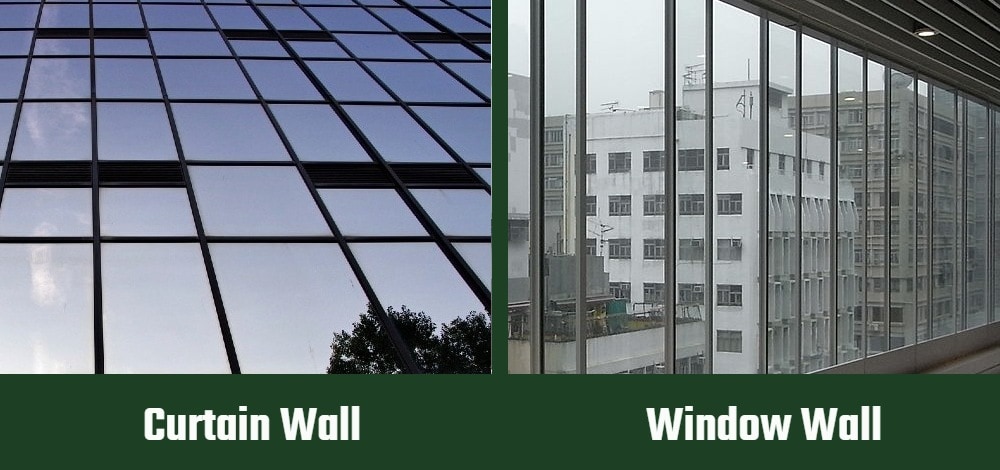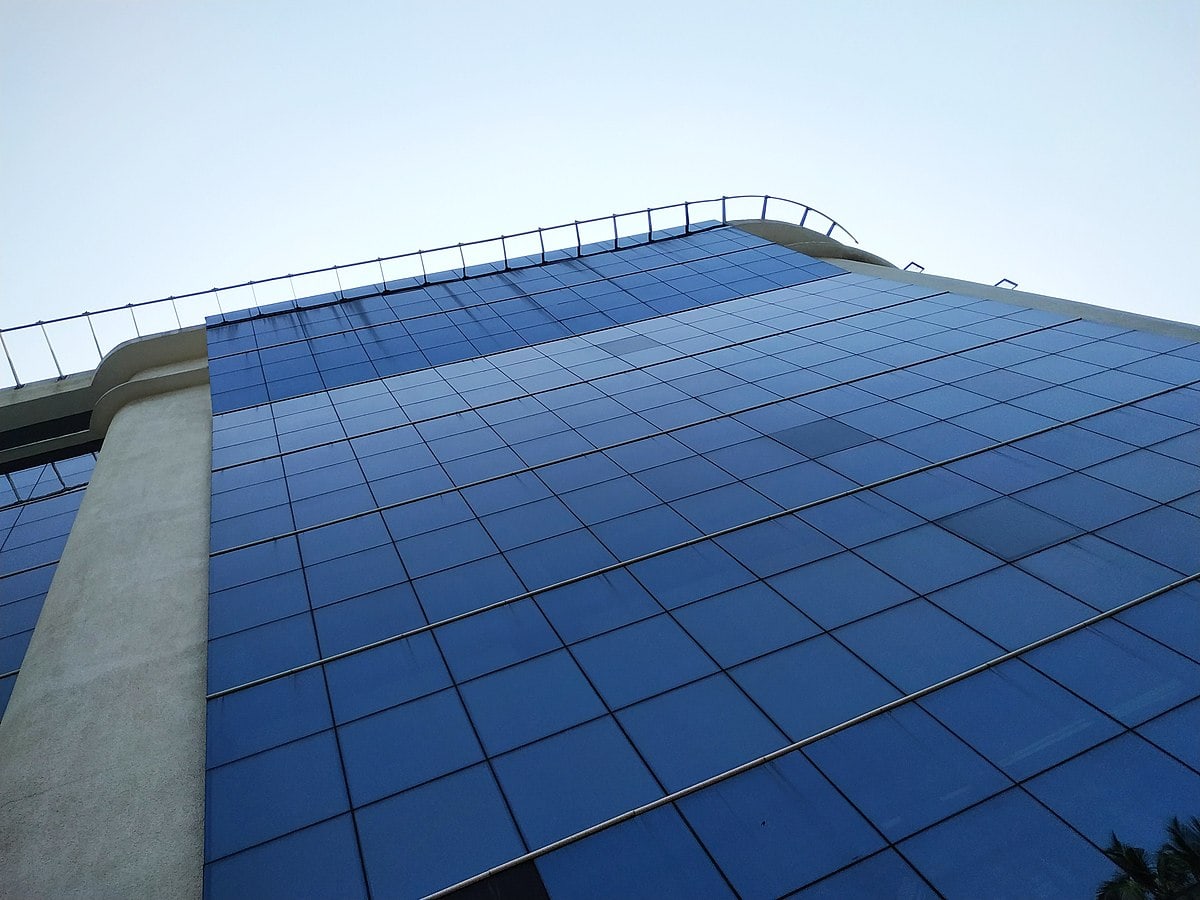Curtain Wall vs. Window Wall: What Are The Differences
-

- Last updated:

The one thing that we love most about glass is, it’s an element that’s versatile in nature. And versatility is the kind of attribute that makes some materials preferable to others in commercial construction.
For eons, we’ve seen contractors integrate glass into the exterior walls of different buildings to make them efficient. And efficient, they usually are. However, efficiency is not the only reason they’ve been doing this.
You see, covering that exterior surface using glass also makes the building look a tad bit more beautiful and unique. In fact, that’s why this practice has become increasingly popular over the years.
Because we want you to make the right choice when deciding which outer covering to go with, we thought we should share our knowledge about the distinguishing features of window and curtain walls.
Curtain Wall Overview

Assuming you’re looking to invest in real estate, and you come across a building that fascinates you in a way, you’ll obviously reach out to your agent. They’ll explain everything you need to know about that building, including the type of walls that it has. If you hear them talk about how the walls of the building are non-structural, that would mean they aren’t designed to take on any of the building’s weight. That would also mean that the building’s design supports curtain walling.
These types of walls are basically glazed panels that have already been framed in a material that’s lightweight and can only support its weight. A good example of such material is aluminum, which is notorious for being durable.
Are Curtain Walls Worth It?
Any keen investor will be able to tell curtain walling is the architectural choice at the moment. There are so many new buildings in the city that are designed using this type of wall, as it offers numerous benefits. Let’s look at the cost of construction, for example.
A significant chunk of any construction’s budget usually goes to the foundation of the building because that’s the part that holds the weight of the entire structure. But since curtain walls are made of materials that don’t put too much pressure on foundations, the construction costs usually go down.
Lighting is the other reason why so many buildings are now exploring the curtain-walling route. Glass will always allow natural light into anything, hence making all rooms and spaces look broader and brighter. You’ll no longer have to switch on the lights the minute you walk into a room, meaning your energy bills will drastically drop as well.
If the thought of saving more money doesn’t tickle your fancy, think about aesthetics and safety. In the context of aesthetics, curtain walls always make an impression. They’ll make any building look elegant, polished, and more importantly, contemporary.
When it comes to safety, you should know curtain walls are designed to be weather-resistant. You’ll never have to deal with moisture trying to penetrate the walls, or strong winds blowing papers around the office. Seeing as they are often customized, the glass panels normally fit the building like a glove.
What’s The Downside To Installing A Curtain Wall?
One of the many important lessons in life is, everything has a good side and the bad side — curtain walls are no different. We kicked this off by telling you guys that we want you to be able to make sound decisions before investing. We believe that won’t be possible if we don’t talk about the drawbacks.
For starters, the installation process is usually not as simple as they’d want you to believe. They’ll tell you it’s easier or simple because it’s installed from the outside, but that’s actually the reason why it’s strenuous. Installing from the outside means having to deal with different weather conditions, including extreme heat and rain. And who wants to be rained on while working? Or even deal with the UV rays from the sun.
Maintenance is the other con on our list. Ensuring that that glass sparkles at all times can be quite the challenge, if you ask us. Well, that and the fact that tiny particles keep piling in between the frames.
Letting in sunlight is an advantage, but depending on how you look at it, it can be a disadvantage as well. Light is good for any room, but what if that light becomes too much for some people? Some experts recommend working with darker interior walls and flooring, and that’s a great solution. However, it doesn’t take into consideration the fact that people have different tastes and preferences. Some people just don’t like darker floors or walls.
Solar heat could also make the room temperature rise to dangerous levels. Unless air conditioners are installed, some occupants might pass out due to heatstroke.
- Good lighting
- Trendy
- Saves on construction costs
- Customized glass panels
- Weather-resistant
- Energy efficient
- Aesthetically pleasing
- High maintenance
- Strenuous installation process
- Let’s in too much light sometimes
Window Wall Overview

What’s a window wall? A unitized cladding system that has been framed in aluminum, and mostly used on high-rise residential real estate. Some people see it as a type of curtain wall, and in a way, it is. What really distinguishes one from the other is that the window wall spans between floor slabs.
Take a quick look at the bottom part of this system, and you’ll find its units laterally fastened to an aluminum angle. The angle, on the other hand, will be fastened to the slab, which has been designed to hold the vertical load of the unit.
At the very top, you’ll find aluminum straps normally used to tightly secure it to the slab’s underside. And unlike the curtain walls, its panels are installed from the interior to reduce the costs of installation and simplify the process.
Are Window Walls Worth It?
Panels in this wall are vision glazing, but some locations have opaque panels installed. The other thing to take note of is that it doesn’t rely on rubber gaskets to act as barriers that keep moisture and air at bay. It relies on silicone, which is basically a sealant that’s well-equipped to deal with air and any form of moisture. This means the effectiveness of the wall will hinge on the experience and skill level of the craftsman. It won’t be 100% effective if the installation was done properly.
In comparison to the curtain wall, this wrapping system is more customizable and allows for more room to incorporate features such as balcony doors and extra windows. And because there’s no space between the cladding and slab edge, contractors believe it compartmentalizes its units in a more efficient way. In other words, it reduces energy consumption considerably.
Moreover, its installation requirement, which says it must be installed between floors, makes it the ideal system to effectively manage odor, smoke, and sound transmission within the building.
What’s The Downside To Installing A Window Wall?
There are only two reasons as to why anybody would pick the curtain wall over the window wall. And one of them is load bearing.
The window wall is a load-bearing wall. What that means is, it’s designed to support the roofing structure and/or a floor’s weight. Now, all that’s great, but it also means that it comes with less glass. Which translates to less sunlight.
The other issue is with leaking. Its silicone does a great job of preventing water leakages, but it must be maintained from time to time. One slip-up, and the whole building turns into a pond.
- Simple installation process
- Manages sound, odor, and smoke effectively
- It’s energy-efficient
- Uses silicone as a sealant
- More customizable
- Susceptible to leaking
- It’s load bearing
Factors To Consider Before Investing In The Walls
Installation
A terrible installation method could be the reason why your well-designed walling system isn’t serving you effectively. We always encourage investors to play it safe and go for curtain walls, if they aren’t completely sure they’ll find someone who truly understands the window wall installation requirements. At the back of your mind, you should always remember that poor placement of these highly engineered walls could lead to unanticipated repairs in addition to air and water leakages.
Maintenance Costs
On matters of cost, the window wall is less costly to maintain in comparison to the curtain wall. There’s no doubt about that. And this is a factor that one has to take seriously, given it dictates what the service life of the wall will be.
Water and Air Penetration
These two problems don’t just affect curtain and window walls, but all types of walls. The five forces responsible for this occurrence include capillary action, surface tension, air pressure, kinetic energy, and gravity.
But unlike most wall types, the window and curtain walls have been designed using materials that are sort of waterproof. Yes, you’ll still have to deal with the leakages from time to time, if you skimp on maintenance.
Thermal Performance
How efficient is your wall when it comes to energy consumption? This is one question that you need to ask before writing a check. Some of these assemblies are so inefficient in this department, that you end up spending more than what the building costs in the long run.
Conclusion
That’s all we had to say today about the curtain and window walls. Of course, there’s still more to learn, but we can’t really cover everything about the industry in one go. We have to break them down into simple, understandable chunks, and hope they help you make informed decisions. Feel free to reach out should you have any questions.
See Also:
Featured Image Credit: Left: Curtain Wall (Arcaion, Pixabay) | Right: Window Wall (Teipangshan102, Wikimedia Commons CC SA 3.0 Unpor
Contents




